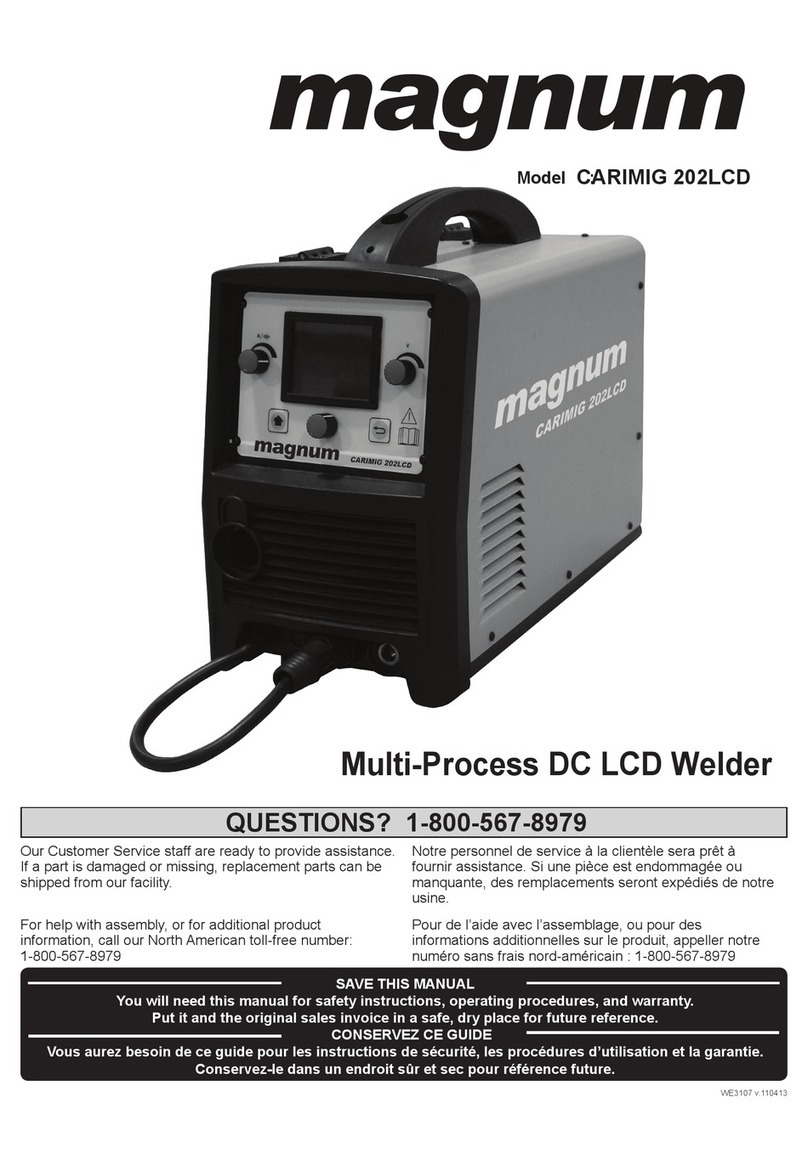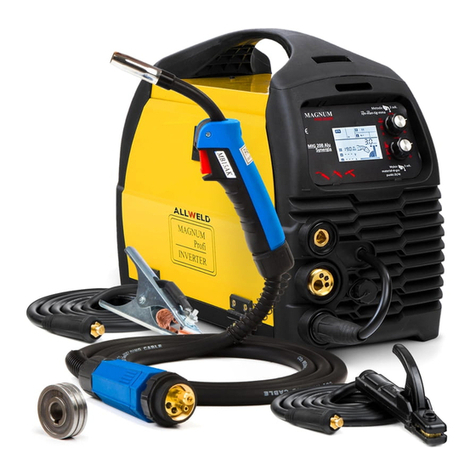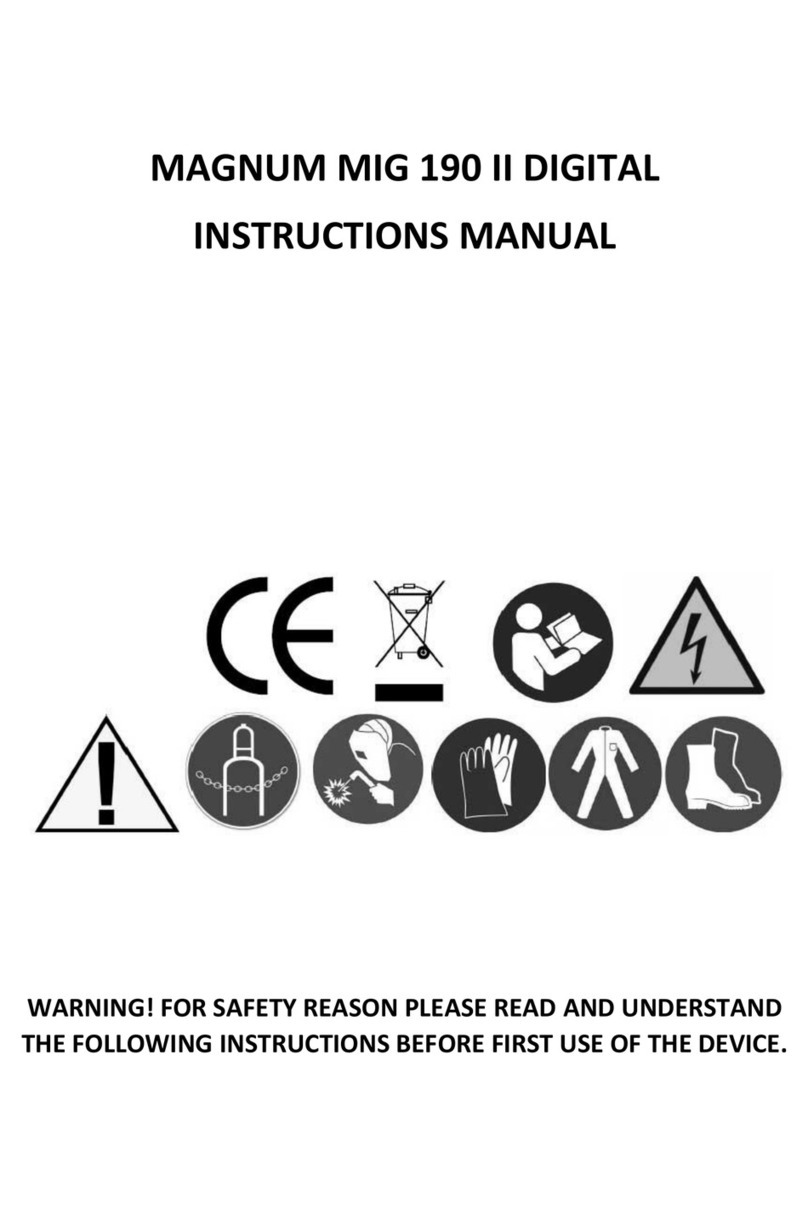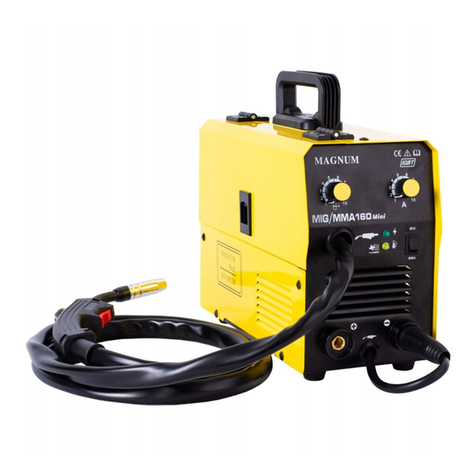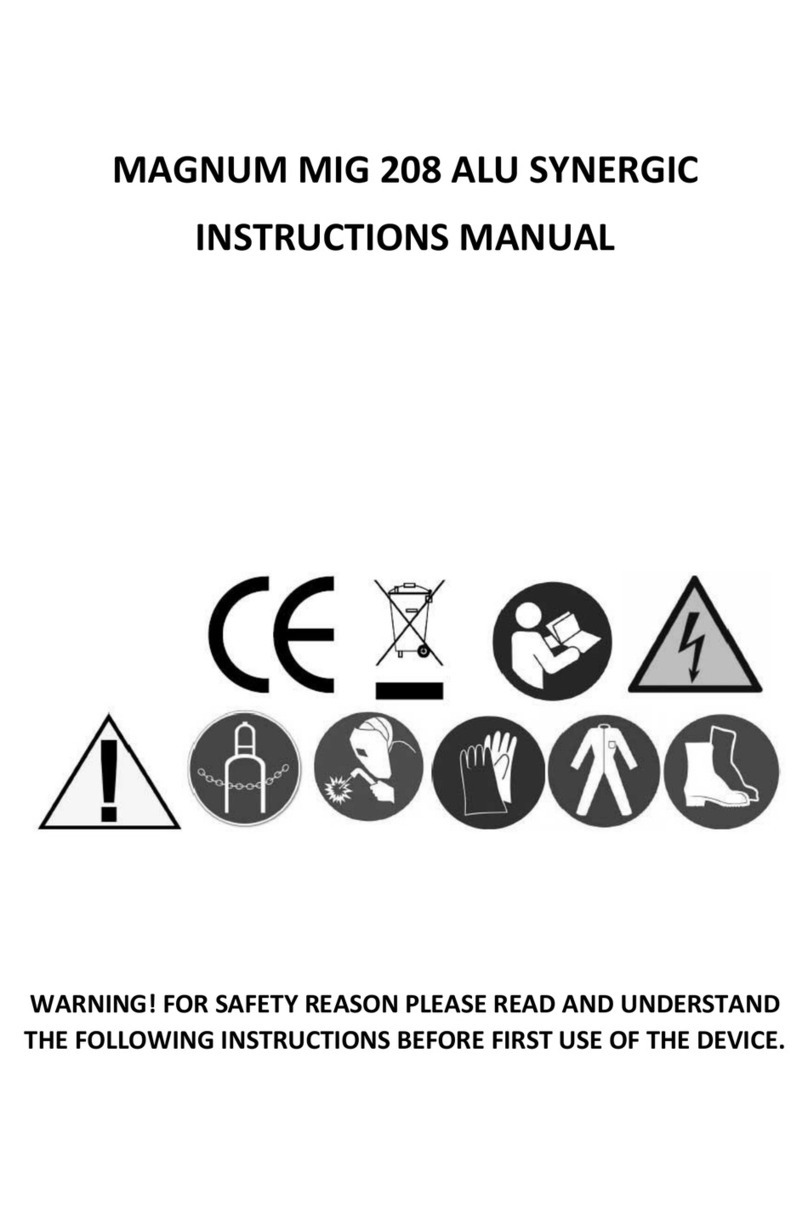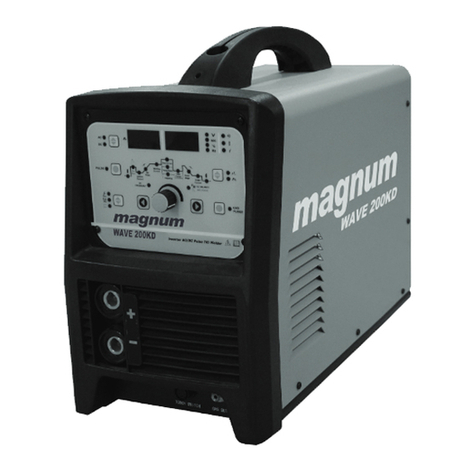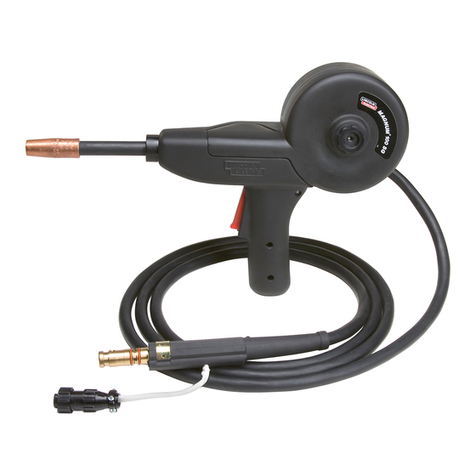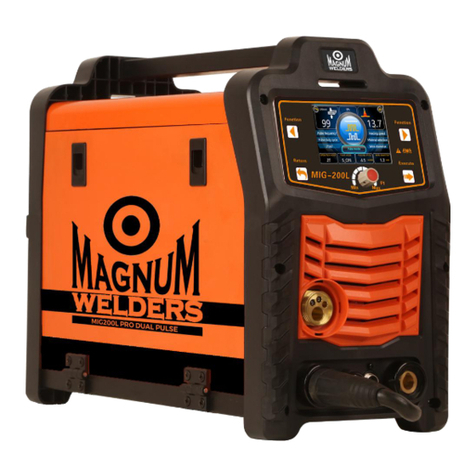
d) Organize the welding equipment.
3.6. Final remarks.
a) When welding works inside tanks, boilers or other closed rooms (up to 15
m3), the welder should be insured by another person outside.
ELECTRIC SHOCK CAN KILL: Welding equipment produces high voltage. Do not touch the
welding gun or connected welding material when the device is plugged in. All components
forming the welding current circuit can cause electric shock, therefore it should be avoided to
touch them with bare hands or through damp or damaged protective clothing. Do not work on
wet surfaces or use damaged welding cables.
ATTENTION: Removal of external covers while the device is connected to the mains, as well
as operation of the device with removed covers is prohibited!
Welding cables, ground cable, earthing clamp and welding equipment should be kept in a good
technical condition ensuring safe operation.
FUMES AND GASES CAN BE DANGEROUS: The welding process produces harmful fumes and
gases that are hazardous to health. The workplace should be adequately ventilated and
equipped with a ventilation exhaust. Do not weld in closed rooms. Avoid inhaling vapors and
gases. The surfaces of the components to be welded should be free from chemical
contamination, such as degreasing substances (solvents), which decompose during welding,
producing toxic gases.
ARC RAYS CAN BURN: It is forbidden to look directly at the welding arc with unobstructed eyes.
Always use a mask or helmets with an appropriate filter. Protect the bystanders with the use of
non-flammable, radiation-absorbing screens. Protect the exposed parts of the body with suitable
protective clothing made of non-flammable material.
ELECTROMAGNETIC FIELD CAN BE DANGEROUS: The electric current flowing through the
welding cables creates an electromagnetic field around it. Electromagnetic fields can interfere
with pacemakers. Welding cables should be placed parallel, as close to each other as possible.
SPARKS CAN CAUSE A FIRE: Welding sparks can cause fire, explosion and burns to bare skin.
Wear welding gloves and protective clothing when welding. Remove or secure any flammable
materials and substances from the workplace. Do not weld closed containers or tanks containing
flammable liquids. Such containers or tanks should be rinsed before welding in order to remove
flammable liquids. Do not weld in the vicinity of flammable gases, vapors or liquids. Fire-fighting
equipment (fire blankets and powder or snow extinguishers) should be located near the
workplace in a visible and easily accessible place.
ELECTRICAL POWER: Disconnect the mains power before starting any work or repairs on the
device. Check welding cables regularly. If any damage to the wire or insulation is noticed, they
should be replaced immediately. Welding cables must not be crushed, touch sharp edges or hot
objects.
CYLINDER MAY EXPLODE: Use only approved cylinders and a properly functioning regulator. The
cylinder should be transported and stand in an upright position. Protect the cylinders against the action
of hot sources of heat, overturning and mechanical damage. Keep all components of the gas installation
in good condition: cylinder, hose, couplings, reducer.
WELDED MATERIALS CAN BURN: Never touch welded parts with unsecured body parts. Welding
gloves and tongs should always be used when touching and moving the workpiece.
8
